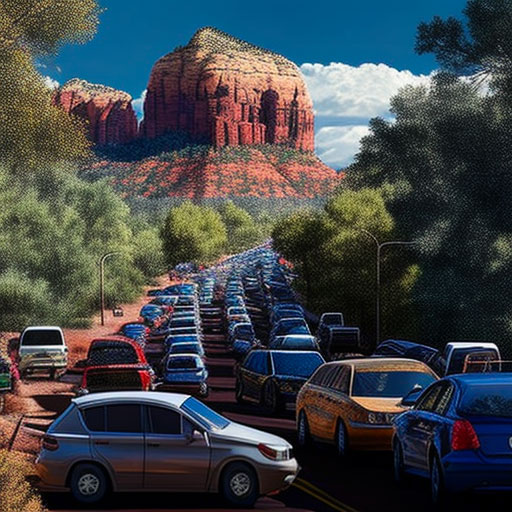Sedona, Arizona, renowned for its striking red rock formations and thriving art scene, has been grappling with mounting traffic congestion. Interestingly, this issue persists despite a decline in the city’s population. This article will delve into the causes, effects, and potential solutions to Sedona’s traffic conundrum by examining the stakeholders involved, identifying peak congestion times and locations, and discussing the challenges in addressing the problem.
Situation:
As a popular tourist destination, Sedona attracts millions of visitors annually, with over 3 million tourists visiting annually. While the city’s population has decreased, the continuous influx of tourists has put immense pressure on the existing transportation infrastructure. The resulting traffic congestion not only inconveniences local residents but also detracts from the overall experience for visitors.
Problem:
The primary contributor to Sedona’s traffic congestion is the dramatic surge in tourism, which strains the city’s infrastructure. Heavy traffic hampers daily commutes and leads to environmental concerns like increased air pollution and a negative impact on local businesses.
Evidence:
Peak traffic times in Sedona coincide with weekends and holidays when tourist numbers are at their highest. Notably, the uptown district and the intersections of State Route 89A and State Route 179 are hotspots for gridlock. The city’s narrow, winding roads and limited parking options exacerbate the issue. Moreover, the area’s unique geological features and protected land status pose challenges to infrastructure expansion or new road construction.
Action: A multifaceted approach is essential to address traffic congestion in Sedona:
- Enhance Public Transportation: Increasing the availability, reliability, and coverage of public transportation options, such as buses and shuttles, can motivate more people to use these services, thus reducing traffic.
- Apply Traffic Management Strategies: Introducing adaptive traffic signals, roundabouts, and restricted vehicle access during peak hours can contribute to better traffic control.
- Encourage Alternative Transportation: By developing bike lanes, pedestrian-friendly paths, and rideshare programs, the city can promote biking, walking, and carpooling, effectively decreasing the number of vehicles on the road.
- Partner with Tourism Agencies: Collaborating with tourism agencies to distribute visitation more evenly throughout the year and highlight less congested attractions can mitigate peak season traffic.
- Ensure Sustainable Growth: It is crucial to incorporate population growth and tourism demand in city planning while preserving Sedona’s natural beauty for successful long-term traffic management.
Implementing these strategies in tandem can improve traffic flow, reduce air pollution, and a more enjoyable experience for residents and visitors. Moreover, these measures can help protect the city’s natural environment and maintain the unique allure that draws people to the area. Sedona can address its traffic challenges and prosper as a sought-after destination through effective stakeholder collaboration and commitment to sustainable growth.



